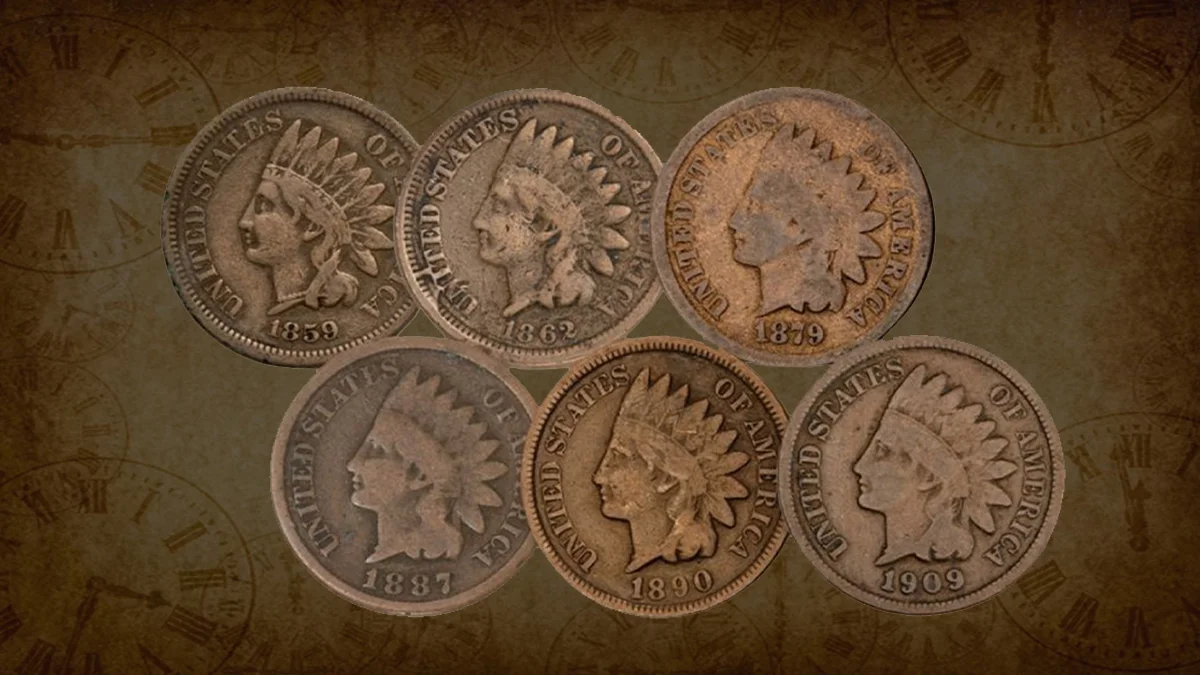
Grading coins is a specialized skill that professional appraisers develop through years of experience to consider each coin’s quality and value accurately. While you can find guidelines and know how to grade Indian Head pennies on your own, this knowledge alone might not be sufficient for top-tier coins. If you want to get the highest possible price for your Indian Head penny at prestigious auctions, having it professionally graded is important. Today, many companies, like PCGS and NGC, offer professional grading services, ensuring your coin’s value is evaluated with the greatest expertise.
Grading Criteria
You can use general ANA standards for grading any coin, but exact descriptions for specific examples usually differ because of the design details, relief height, and wear patterns. It’s important to check the guidelines specific to your coin type and observe them closely. Examine all visible details, either by eye or with a magnifying glass, as rough assessments aren’t acceptable—elements might look identical to definitions but may be discussed in important methods.
Our grading guide follows the Sheldon Grading Scale, a 70-point system designed by William Herbert Sheldon in 1949 and widely adopted by the American Numismatic Association for assessing coin quality. It serves as the ideal for grading by main third-party services.
Understanding Grades for Indian Head Pennies
Indian Head pennies fall into two types, determined by composition and weight. Early coins from 1859 to 1864 were heavier and had a lower copper ratio, with nickel in the alloy. After pennies, minted from 1864 to 1909, lacked nickel. In 1858, the US Mint also made unique patterns, while coins struck later had both regular issues and proofs.
The nickel in early coins gave them a slight silver shade and added hardness but made hitting more challenging, guiding to worn or broken dies. The latest alloy softened the metal, making minting easier and allowing for beautiful toning. Maintain these differences in mind when grading Indian Head cents.
Indian Head penny
Face value: One cent ($0.01)
Compound: Cupronickel alloy with 88% copper (1859 to 1864)
Cupronickel alloy with 95% copper (1864 to 1909)
Coin weight: 0.16 ounces (4.67 g) – from 1859 to 1864
0.11 ounces (3.11 g) – from 1864 to 1909
Coin diameter: 0.75 inches (19.05 mm)
Coin thickness: 0.09 inches (2.30 mm)
This is particularly important for Indian Head pennies in mint state, as grading has considering color. The coin’s value can widely depending on toning, with red-toned examples being the most demanded. When labeling graded coins in mint state, follow this format: year – mint mark – mint state grade – color designation.
For example:
- 1908 S MS 68 RD Indian Head penny – for red-toned pieces
- 1908 S MS 68 RB Indian Head penny – for red-brown pieces
- 1908 S MS 68 BN Indian Head penny – for brown pieces
When grading, focus on the highest design points, as these places wear down first and are key in choosing the coin’s condition and grade.
How to Grade Indian Head Penny?
The Indian pennies are classic and among the most preferred United States coinage. Most are available at decent costs, but some collectors prefer rarities. In this case, there are three keys, having:
- 1877 red cents
- 1908 S red cents
- 1909 S red cents
Even these coins are not extremely rare but some red pieces in the highest grades. Sometimes, a mixture of a few atypical factors dictates unexpectedly high prices.
1. About Good (AG)’
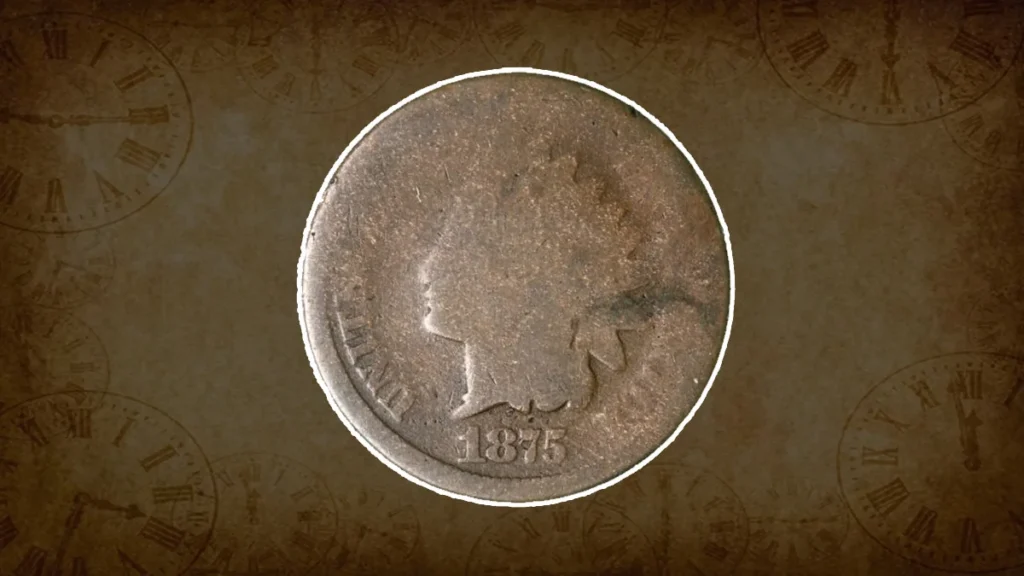
You should be aware that many numismatists keep clear of poorly preserved Indian pennies graded in this manner since they are not collectible. Their surfaces are heavily worn out and often hardly damaged after spending years in circulation.
Obverse
Inscriptions are hardly readable, and Liberty’s head is traced without recognizable details. Although the lettering is smooth and sometimes attached to the edge, you can identify the date effortlessly.
Reverse
The design is very worn, with the bow blending into the wreath, and the leaves are hard to see in the flattened wreath. The denomination “ONE CENT” is worn but still readable.
2. Good (G, G4, G6)
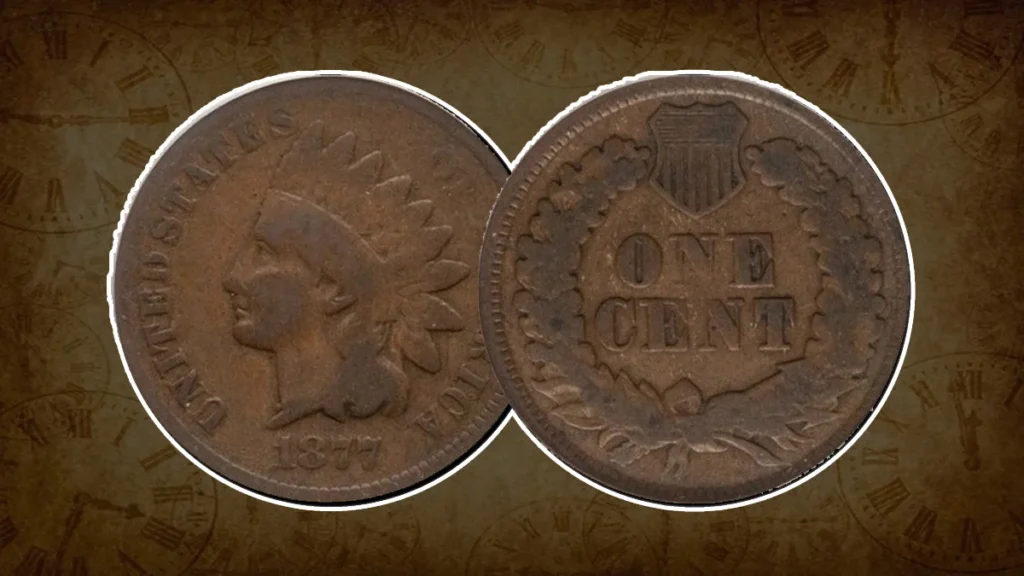
While collectors usually avoid coins in this grade, older Indian Head pennies—especially those minted before the Civil War or in 1877—can still be valuable, even when worn.
Obverse: The portrait is outlined but lacks fine details, with hair and feathers blending. The date and inscriptions are clear and separate from the edge, which is mostly intact.
Reverse: The wreath is worn flat, it is impossible to distinguish one leaf from another. The bow and arrows merge into one outline, and most horizontal lines on the shield are missing.
3. Very Good (VG, VG8, VG10)
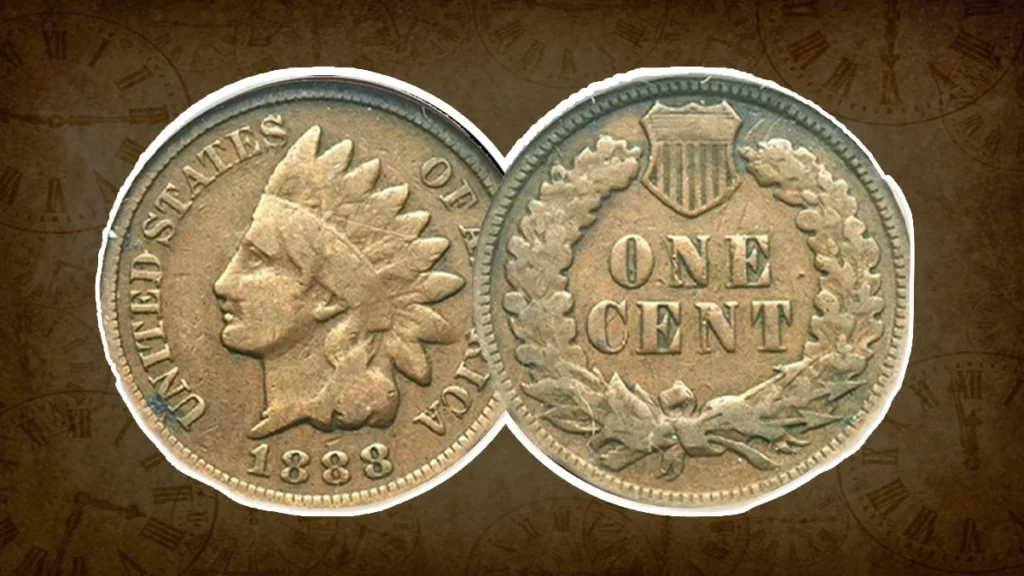
Indian Head pennies in this grade are well-worn but have a clear design with basic elements visible, though flat and lacking fine detail.
Obverse: The word “LIBERTY” on the headband is faint, with at least three letters visible. Coins with any mix of two full and two partial letters also fall into this grade. Legends and the date are worn but defined.
Reverse: Some wreath details are visible, though the tops are smooth. The bow is faintly outlined, and the ribbons remain flat.
4. Fine (F, F12, F15)
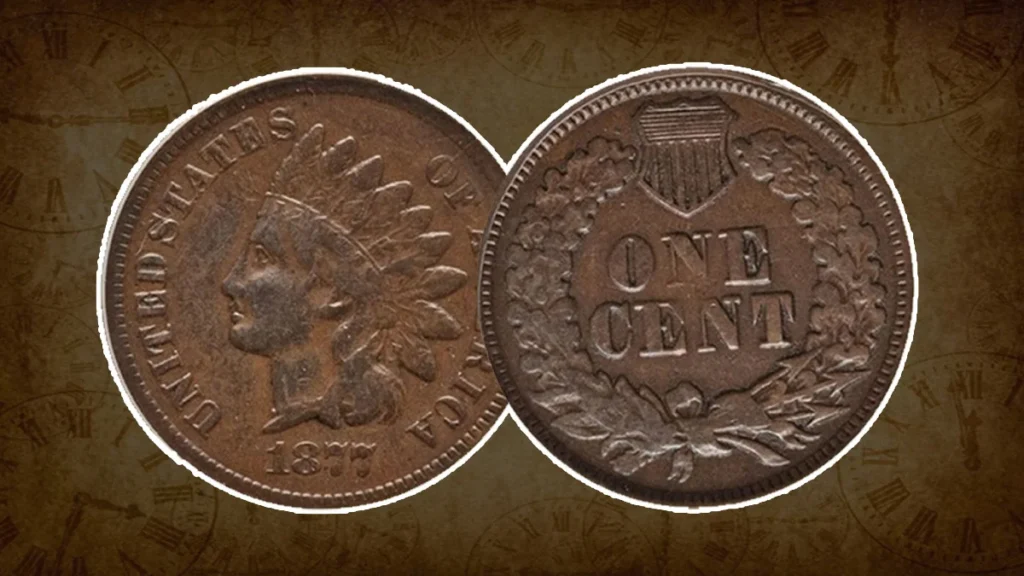
Pennies in this grade show moderate, even wear across the surface, with clear legends and dates. Though not perfect, these coins are still popular with collectors, especially those minted before 1880.
Obverse: Coins in this grade must have “LIBERTY” on the headband fully readable, though faint in places. The hairline and forehead are separated, and the feather bases are defined. About a quarter of the hair detail is visible, and the ribbon is smooth.
Reverse: Horizontal lines on the shield are visible but may merge slightly. The wreath shows defined, though flattened, leaves. The bow knot and outer arrows are clear, though leaf tops often blend together.
5. Very Fine (VF, VF20, VF25, VF30, VF35)
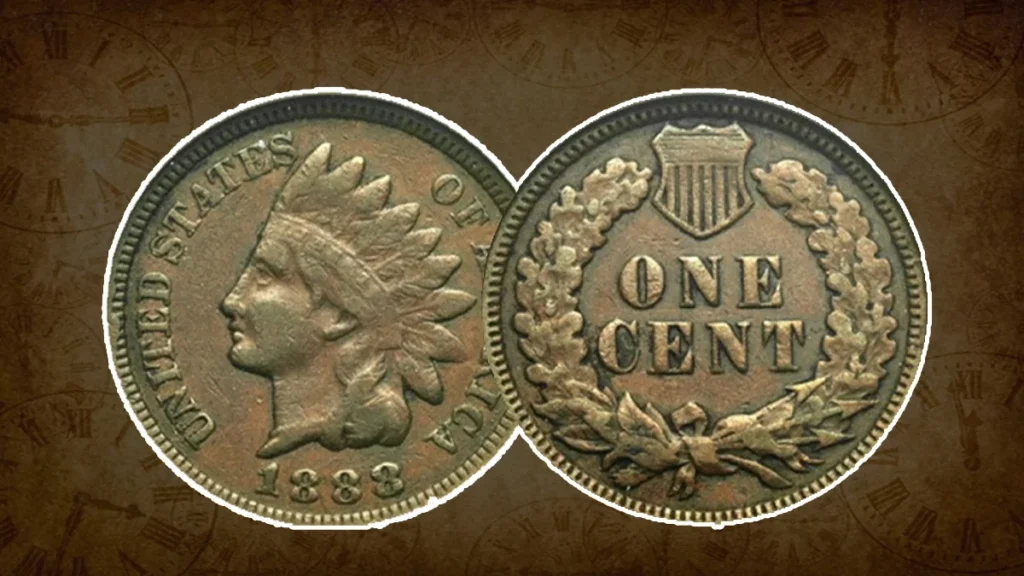
These coins show moderate wear and some flatness on the highest points but remain attractive and collectible.
Obverse: “LIBERTY” letters are worn but sharp. Half of the hair details are visible, with slight wear on feather tips, hair ends, and the ribbon.
Reverse: Wreath leaves, arrows, and the bow are worn but still display most details. Leaf tips show minor wear, and the bow appears slightly flat.
6. Extra Fine (EF40, EF45)
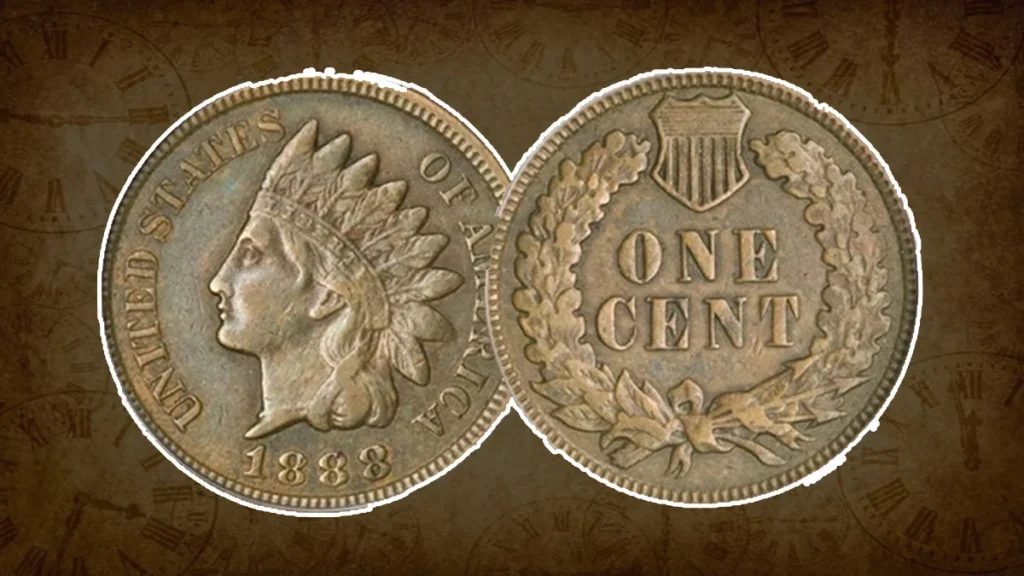
These pennies show slight wear on the highest points, but the design is well-defined, with recognizable and sharp details. Some areas may even display traces of mint luster.
Obverse: “LIBERTY” should be fully visible with sharp letters. Feather tips are well-defined with only minor wear. The diamond pattern on the ribbon is clear, though there may be slight wear on the curl above the ear; details by the neck remain sharp.
Reverse: The shield has clear, distinct lines, while the bow shows light wear. The tops of the leaves are smooth, but details on the wreath and central leaves are still recognizable.
7. About Uncirculated (AU50, AU55, AU58)

These Indian pennies show only minor traces of wear, with a few light abrasions on the highest points. Both surfaces are well-preserved, with nearly complete mint luster, often around three-quarters.
Obverse: This side shows slight wear, mainly on the hair curl above Liberty’s ear and the lowest curl behind the ribbon. Inscriptions, feathers, and the diamond pattern on the ribbon remain complete and appealing.
Reverse: Light wear is visible on the bow knot and most leaves of the wreath, with the most noticeable changes occurring at the highest design peaks.
8. Mint State (from MS60 to MS70)
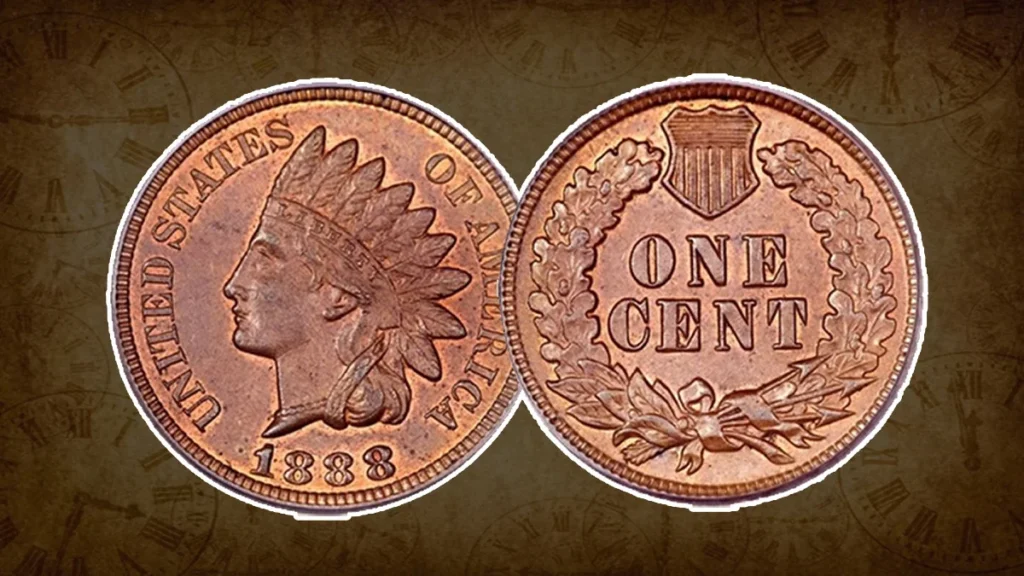
Finding perfectly preserved Indian pennies in the highest mint state ranks is rare due to their age. However, dedicated collectors have preserved some uncirculated coins over the decades, showcasing recognizable mint luster and well-preserved details.
These specimens show no wear from circulation but may have visible contact and bag marks on their surfaces. These attractive coins are highly collectible and often come with a high price tag.
Related Post – How to Grade Liberty Nickels: A Beginner’s Guide
Bottom Line:
When evaluating the grade of an Indian Head cent, there are obviously many things that should be taken into account. Since there is no indication that the popularity of these coins will decline, precise grading is going to be important for determining their value and appeal.
